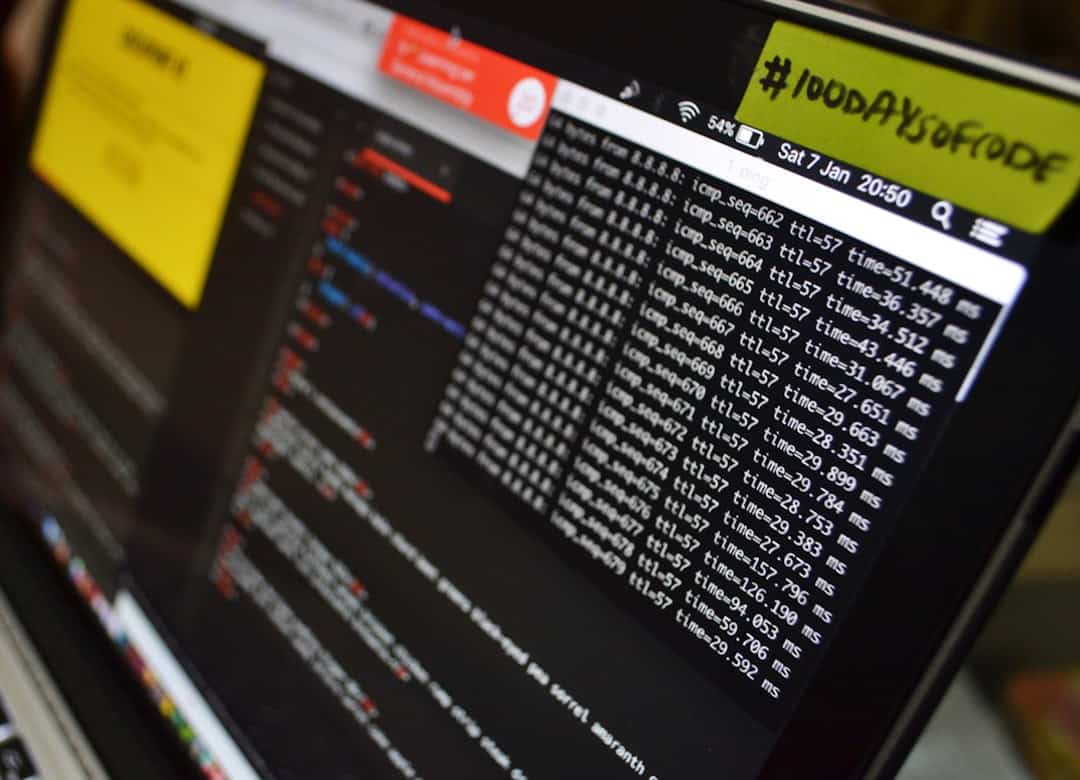In today’s digital world, cybersecurity has become a critical aspect of our daily lives. With the increasing reliance on technology for communication, financial transactions, and data storage, the need to protect our digital assets from cyber threats has never been more important. Cybersecurity is essential for safeguarding sensitive information, preventing identity theft, and ensuring the integrity of digital systems.
Without proper cybersecurity measures in place, individuals, businesses, and organizations are vulnerable to a wide range of cyber threats, including malware, phishing attacks, ransomware, and data breaches. These threats can have devastating consequences, leading to financial loss, reputational damage, and legal liabilities. As such, it is crucial for everyone to understand the importance of cybersecurity and take proactive steps to protect themselves and their digital assets.
In addition to protecting personal information, cybersecurity is also vital for national security and the global economy. With the increasing interconnectedness of digital systems, the potential impact of cyber attacks on critical infrastructure, government agencies, and financial institutions cannot be overstated. Cyber attacks have the potential to disrupt essential services, compromise sensitive government data, and destabilize financial markets.
As such, governments and businesses around the world are investing significant resources in cybersecurity to mitigate these risks and ensure the resilience of their digital infrastructure. In summary, cybersecurity is essential for protecting individuals, businesses, and nations from the growing threat of cyber attacks in today’s digital world.
Key Takeaways
- Cybersecurity is crucial in today’s digital world to protect sensitive information and prevent cyber attacks.
- Common cybersecurity risks include phishing, malware, ransomware, and social engineering attacks.
- CompTIA offers certifications and training programs to equip professionals with the skills needed to combat cybersecurity threats.
- Implementing best practices such as regular software updates, strong passwords, and employee training can help protect digital assets.
- Cybersecurity has a significant impact on businesses and organizations, including financial losses and damage to reputation.
Understanding the Threats: Common Cybersecurity Risks
Malware: A Common Cybersecurity Risk
One of the most common cybersecurity risks is malware, which includes viruses, worms, and trojans that can infect computers and mobile devices, steal sensitive information, and disrupt normal operations. Malware is often distributed through malicious websites, email attachments, or infected software, making it essential for users to exercise caution when browsing the internet or downloading files.
Phishing and Ransomware Attacks
Another prevalent threat is phishing, which involves the use of deceptive emails or websites to trick individuals into revealing personal information such as passwords, credit card numbers, or social security numbers. Phishing attacks can be highly sophisticated and difficult to detect, making it crucial for users to be vigilant and verify the authenticity of any requests for sensitive information. Ransomware is another significant cybersecurity risk that has gained prominence in recent years. Ransomware attacks involve the encryption of a victim’s data by cybercriminals who demand a ransom in exchange for restoring access to the affected files.
Data Breaches and Consequences
Data breaches pose a significant threat to the security of personal and corporate information. Cybercriminals often target databases containing sensitive data such as customer records, financial information, and intellectual property. When a data breach occurs, it can result in financial loss, reputational damage, and legal consequences for the affected individuals or organizations. Overall, understanding the common cybersecurity risks is essential for individuals and businesses to take proactive measures to protect themselves from potential threats.
The Role of Comptia in Cybersecurity: Certifications and Training

CompTIA (Computing Technology Industry Association) plays a crucial role in the field of cybersecurity by providing industry-leading certifications and training programs for IT professionals. CompTIA certifications such as Security+, CySA+, and CASP are widely recognized as valuable credentials for individuals seeking to establish a career in cybersecurity or advance their existing skills. These certifications cover a wide range of cybersecurity topics including network security, threat management, cryptography, and risk management.
By obtaining CompTIA certifications, IT professionals can demonstrate their expertise in cybersecurity and enhance their career prospects in this rapidly growing field. In addition to certifications, CompTIA offers comprehensive training programs that equip individuals with the knowledge and skills needed to address the latest cybersecurity challenges. These training programs cover a variety of topics such as ethical hacking, penetration testing, incident response, and security analytics.
Through hands-on learning experiences and real-world simulations, participants can gain practical insights into cybersecurity best practices and develop the expertise needed to protect digital assets from evolving threats. Furthermore, CompTIA’s training programs are designed to accommodate learners at all levels, from beginners seeking an introduction to cybersecurity concepts to experienced professionals looking to specialize in advanced areas of security. Overall, CompTIA plays a vital role in cybersecurity by providing industry-recognized certifications and training programs that empower IT professionals to excel in this critical field.
Implementing Cybersecurity Best Practices: Tips for Protecting Your Digital Assets
| Best Practices | Metrics |
|---|---|
| Regular Software Updates | Percentage of systems with up-to-date software |
| Strong Password Policies | Number of password resets per month |
| Employee Training | Number of employees trained in cybersecurity |
| Network Security Measures | Number of attempted network breaches |
| Data Encryption | Percentage of sensitive data encrypted |
Implementing cybersecurity best practices is essential for protecting your digital assets from a wide range of cyber threats. One of the most fundamental best practices is to keep your software and operating systems up to date with the latest security patches. Software vendors regularly release updates to address known vulnerabilities and improve the overall security of their products.
By staying current with these updates, you can reduce the risk of exploitation by cybercriminals seeking to exploit outdated software. Additionally, using strong and unique passwords for your online accounts is crucial for preventing unauthorized access to your personal information. Passwords should be complex and include a combination of letters, numbers, and special characters to enhance their strength.
Another important best practice is to enable two-factor authentication (2FA) whenever possible. 2FA adds an extra layer of security by requiring users to provide a second form of verification in addition to their password when logging into an account. This can help prevent unauthorized access even if your password is compromised.
Furthermore, being cautious when clicking on links or downloading attachments from unknown sources can help mitigate the risk of falling victim to phishing attacks or malware infections. It is essential to verify the legitimacy of any requests for sensitive information before providing any personal details or clicking on suspicious links. Overall, implementing cybersecurity best practices is crucial for safeguarding your digital assets and reducing the risk of falling victim to cyber threats.
The Impact of Cybersecurity on Businesses and Organizations
Cybersecurity has a significant impact on businesses and organizations across all industries. A successful cyber attack can result in financial loss, reputational damage, legal liabilities, and operational disruptions that can have far-reaching consequences for an organization’s bottom line and long-term viability. In addition to direct financial costs associated with responding to a cyber attack and mitigating its impact, businesses may also incur indirect costs such as loss of customer trust, decreased productivity, and regulatory fines for failing to protect sensitive data.
Furthermore, the reputational damage caused by a data breach or security incident can have lasting effects on an organization’s brand image and market position. From a regulatory perspective, businesses are increasingly subject to stringent data protection laws that require them to implement robust cybersecurity measures to safeguard customer information and sensitive data. Failure to comply with these regulations can result in severe penalties and legal consequences for organizations that fail to adequately protect their digital assets.
As such, cybersecurity has become a critical priority for businesses seeking to maintain regulatory compliance and uphold their ethical responsibilities towards customers and stakeholders. Overall, the impact of cybersecurity on businesses and organizations underscores the importance of investing in robust security measures to protect against potential threats.
The Future of Cybersecurity: Emerging Technologies and Trends

The future of cybersecurity is shaped by emerging technologies and trends that are transforming the landscape of digital security. One such trend is the increasing adoption of artificial intelligence (AI) and machine learning (ML) technologies for enhancing cybersecurity capabilities. AI-powered security solutions can analyze vast amounts of data in real-time to detect anomalies, identify potential threats, and automate response actions without human intervention.
This enables organizations to proactively defend against sophisticated cyber attacks and respond more effectively to security incidents. Additionally, blockchain technology is gaining prominence as a means of securing digital transactions and protecting sensitive data through decentralized encryption mechanisms. Another emerging trend is the convergence of cybersecurity with other fields such as cloud computing, internet of things (IoT), and edge computing.
As these technologies become more integrated into everyday business operations, the need for robust cybersecurity measures becomes increasingly critical to protect interconnected systems from potential vulnerabilities. Furthermore, as remote work becomes more prevalent, securing remote access and endpoint devices has become a top priority for organizations seeking to maintain a secure digital environment. The future of cybersecurity will also be influenced by regulatory developments such as the implementation of global data protection standards and increased scrutiny on privacy rights in the digital age.
Overall, the future of cybersecurity will be shaped by emerging technologies and trends that require organizations to adapt their security strategies to address new challenges.
Taking Action to Safeguard Your Digital World
In conclusion, cybersecurity plays a vital role in today’s digital world by protecting individuals, businesses, and organizations from a wide range of cyber threats. Understanding common cybersecurity risks is essential for taking proactive measures to protect digital assets from potential attacks such as malware, phishing, ransomware, and data breaches. CompTIA’s certifications and training programs provide valuable resources for IT professionals seeking to enhance their expertise in cybersecurity and advance their careers in this critical field.
Implementing cybersecurity best practices is crucial for safeguarding personal information and reducing the risk of falling victim to cyber threats. The impact of cybersecurity on businesses underscores the importance of investing in robust security measures to protect against potential threats that can result in financial loss, reputational damage, legal liabilities, and operational disruptions. The future of cybersecurity will be shaped by emerging technologies such as artificial intelligence, blockchain, cloud computing, internet of things (IoT), edge computing, and regulatory developments that require organizations to adapt their security strategies to address new challenges.
Taking action to safeguard your digital world is essential for protecting sensitive information and ensuring the integrity of digital systems in an increasingly interconnected digital landscape. By staying informed about cybersecurity best practices and leveraging industry-leading resources such as CompTIA’s certifications and training programs, individuals and organizations can enhance their ability to defend against evolving cyber threats and maintain a secure digital environment now and in the future.
If you’re interested in learning more about the intersection of technology and security, you might want to check out this article on augmented reality (AR). As cybersecurity becomes increasingly important in the digital age, understanding how emerging technologies like AR can impact security measures is crucial. This article provides valuable insights into the potential cybersecurity implications of AR and how professionals in the field can stay ahead of potential threats.
FAQs
What is CompTIA Cybersecurity?
CompTIA Cybersecurity is a certification program offered by CompTIA, a leading provider of vendor-neutral IT certifications. It is designed to validate the skills and knowledge of IT professionals in the field of cybersecurity.
What does the CompTIA Cybersecurity certification cover?
The CompTIA Cybersecurity certification covers a wide range of cybersecurity topics, including threat management, vulnerability management, cyber incident response, security architecture, and more. It is designed to provide a comprehensive understanding of cybersecurity principles and best practices.
Who is the CompTIA Cybersecurity certification for?
The CompTIA Cybersecurity certification is ideal for IT professionals who are responsible for securing and protecting their organization’s IT infrastructure. This includes security analysts, security engineers, network administrators, and other IT professionals who are involved in cybersecurity operations.
What are the benefits of obtaining the CompTIA Cybersecurity certification?
Obtaining the CompTIA Cybersecurity certification can lead to career advancement opportunities, as it demonstrates a high level of expertise and knowledge in the field of cybersecurity. It can also increase job prospects and earning potential, as many employers value the CompTIA Cybersecurity certification as a validation of a candidate’s cybersecurity skills.
How can I prepare for the CompTIA Cybersecurity certification exam?
There are various study materials and resources available to help prepare for the CompTIA Cybersecurity certification exam, including official CompTIA study guides, practice exams, and training courses. It is also recommended to gain hands-on experience in cybersecurity through practical work or lab exercises.











Leave a Reply